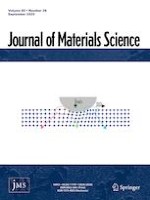29.05.2020 | Chemical routes to materials
Urea–nitrate combustion synthesis of CuO/CeO2 nanocatalysts toward low-temperature oxidation of CO: the effect of Red/Ox ratio
Erschienen in: Journal of Materials Science | Ausgabe 26/2020
EinloggenAktivieren Sie unsere intelligente Suche, um passende Fachinhalte oder Patente zu finden.
Wählen Sie Textabschnitte aus um mit Künstlicher Intelligenz passenden Patente zu finden. powered by
Markieren Sie Textabschnitte, um KI-gestützt weitere passende Inhalte zu finden. powered by
